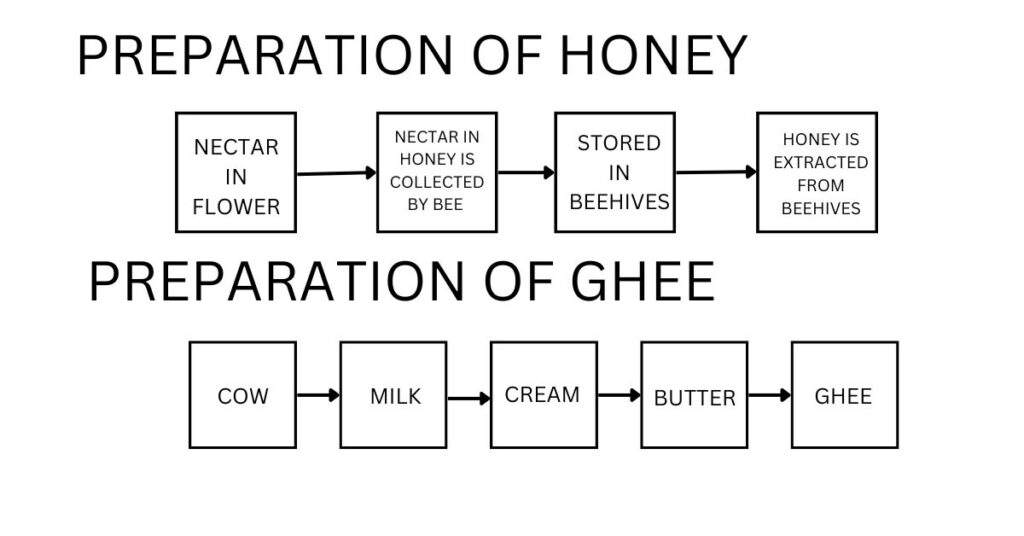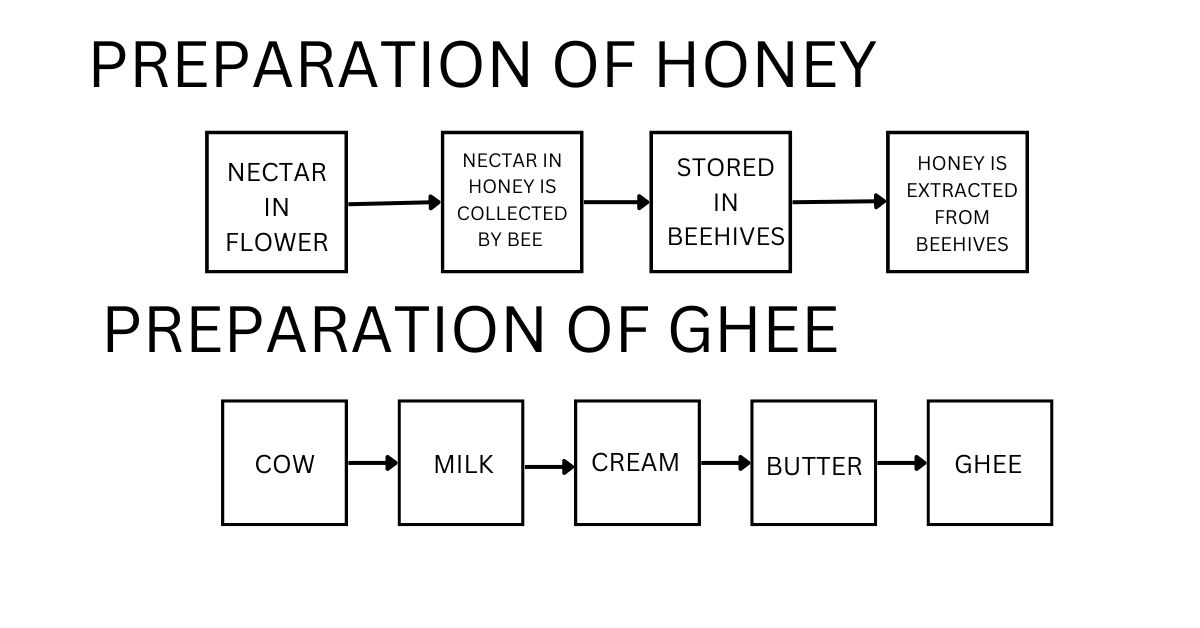NCERT Solutions for Class 6 Science Chapter 1 Food Where Does It Come From
| Section Name | Topic Name |
|---|---|
| 1 | Food: Where Does it Come From? |
| 1.1 | Food Variety |
| 1.2 | Food Materials and Sources |
| 1.3 | Plant Parts and Animal Products as Food |
| 1.4 | Plant parts as food |
| 1.5 | What do Animals Eat? |
Q. 1. Do you find that all living beings need the same kind of food?
Answer: No, not all living things require the same type of sustenance.
Q.2. Name five plants and the parts that we eat.
Answer: Five plants that we consume include the following names and parts:
Wheat and Paddy both contain seeds, seeds, and leaves of the mustard plant, Fruits of the brinjal plant, and stalks of a potato plant.
Q. 3. Match the items given in column A with those in column B.
| Column A | Column B |
|---|---|
| Milk, curd, paneer, ghee | eat other animals |
| Spinach, cauliflower, carrot | eat plants and plant products |
| Lions and tigers | are vegetables |
| Herbivores | are all animal products |
Answer:
| Column A | Column B |
|---|---|
| Milk, curd, paneer, ghee | are all animal products |
| Spinach, cauliflower, carrot | are vegetables |
| Lions and tigers | eat other animals |
| Herbivores | eat plants and plant products |
Q. 4. Fill up the blanks with the words given:
herbivore, plant, milk, sugarcane, carnivore.
(a) Tiger is a__________ because it eats only meat.
(b) Deer eats only plant products and so is called______________ .
(c) Parrot eats only__________
(d) The_________ that we drink, which comes from cows, buffaloes and goats is
an animal product.
(e) We get sugar from___________ .
Ans. (a) carnivore (b) herbivore (c) plant
(d) milk (e) sugarcane
Extra Questions for Class 6 Science Chapter 1
Questions with Very Short Answers for Class Six Science Chapter 1
Q.1 Give two instances when two or more plant components are utilized to make food.
Ans. Mustard — seeds, leaves,
Pumpkin — fruit, and flowers.
Q.2 Give the name of any aquatic plant that is consumed as food.
Ans: Lotus: The lotus stem is consumed as food.
Q.3 Name three strategies you can think of to prevent food waste.
Ans. (I) Try not to waste food at meals.
(ii) It’s best to “eat to live” rather than “live to eat”; overindulging should be avoided.
(iii) Raw foods, such as grains and pulses, should be carefully preserved.
Q.4NName two plants that make sugar.
Answer: (A) Sugarcane (B) Sugarbeet
Q.5 Please describe a non-green plant that we consume.
Ans. Yes, a mushroom.
Q.6 What do you describe a person’s habitual consumption of a certain food item type?
ANS.Food addiction.
Q.7 Compare your eating habits to those of your buddy who resides in Tamil Nadu.
Ans. Chapatti, lentils, lassi, rice, veggies, and mustard oil are some of my go-to meals.
Idli, dosa, sambhar, bara, rasam, upma, and coconut oil are some of my friend’s favorite foods.
Q.8 What ingredients are used to make cooked rice?
Answer: Water and raw rice.
Q.9 Examine the components of various foods. Are there any common culinary components there?
Ans. Yes, they contain certain basic components like ghee, salt, and water.
Q.10 What are the two most common sources of food ingredients?
Ans. (I) Plants (II)Animals
Q.11 Name three items produced by both plants and animals.
Ans. Vegetables, cereals, and other plant products are examples.
Milk, eggs, and meat are examples of animal products.
Q.12 Describe three edible plant components.
Ans. (i) Roots (ii) FMITS (iii) Leaves
Question 13: Which part of plants do people most commonly consume?
Ans. We often consume the fruits of various plants.
Q.14 Do sprout or normal seeds supply more energy?
Ans. Sprouting seeds contain more energy than ordinary seeds.
Q.15 What is honey, exactly?
Ans. Honey is a sweet liquid produced by bees from riectar, or sweet juice gathered from flowers.
Class 6 Science Chapter 1 SHORT ANSWER TYPE QUESTIONS
Q. 1. Using a flow chart, show the numerous components involved when we consume a chapatti.

Q.2. Make flow charts for the preparation of honey and ghee.

Q.3 Distinguish between herbivores, carnivores, and omnivores. Provide two instances of each.


